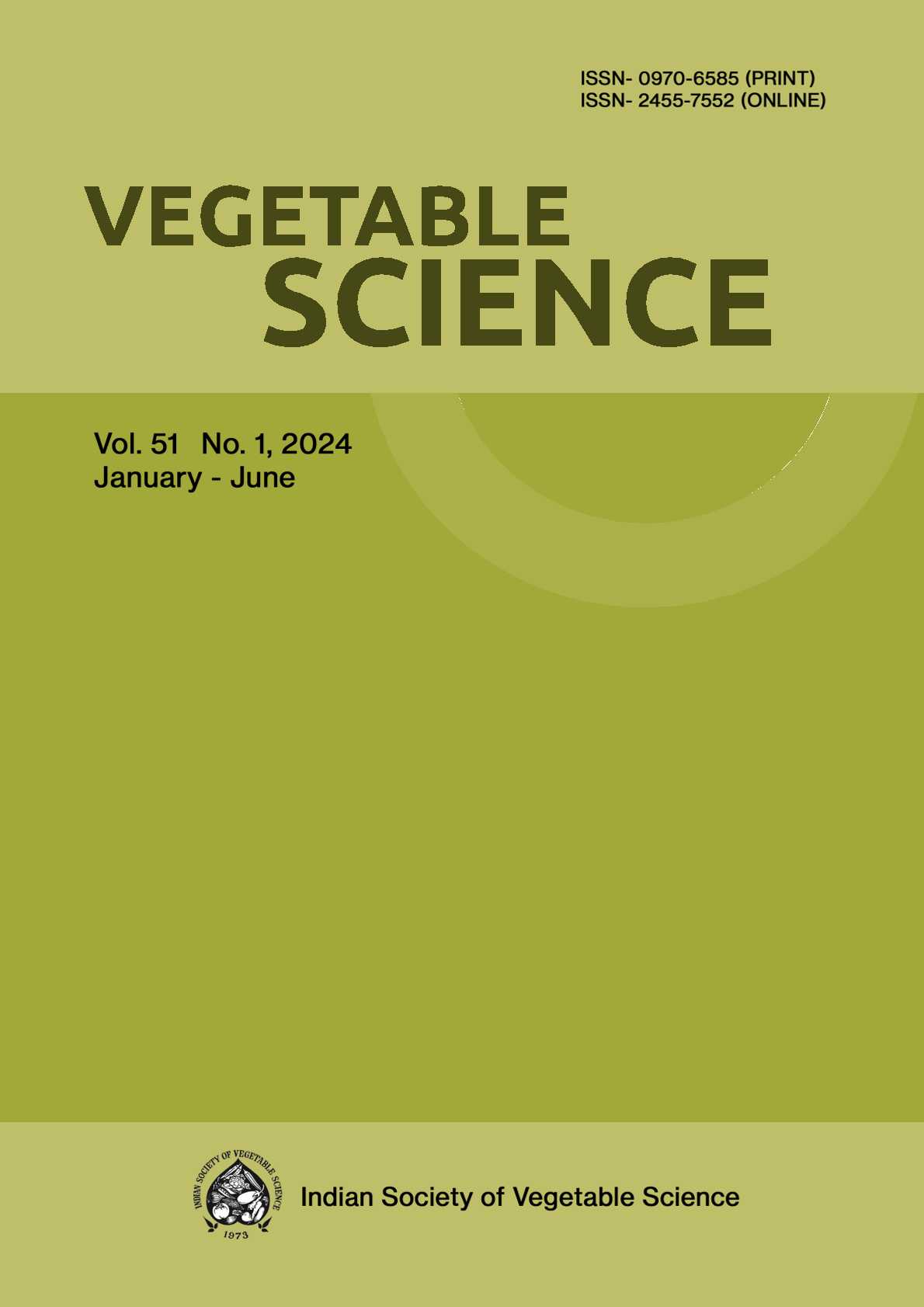Combining ability and gene action studies over environments in bacterial wilt resistant tomato genotypes
DOI:
https://doi.org/10.61180/Keywords:
Bacterial wilt, combining ability, gene action, Solanum lycopersicum, tomatoAbstract
Tomato cultivation in many potential pockets of India has suffered a serious set-back due to bacterial wilt disease (Ralstonia solanacearum). Being soil borne only the genetic resistance in the cultivars/hybrids is of practical significance. In the current study, 28 hybrids (developed by crossing 7 bacterial wilt resistant determinate lines with 4 indeterminate resistant testers) along with their parents were evaluated 2009 and 2010. Appreciable diversity in the experimental material existed as revealed by significant differences due to lines, testers and line x tester interactions in pooled environment for most of the traits. On the basis of general combining ability of the parents, it was concluded that the lines 7-2 and BWR-5 and the testers 16-B and CLN1314G were found to be the best general combiners for marketable fruit yield and most of the component traits. The hybrids BWR-5 x 16-B, 17-2 x CLN1314G and 7-2 x Palam Pride were observed consistently good specific combinations over both the environments. Non-additive gene action was observed for the traits marketable yield per plant, days to 50 per cent flowering, pericarp thickness, plant height, harvest duration and TSS over environments. However, for the traits days to first harvest, gross yield per plant, total number of fruits per plant, marketable fruits per plant, fruit weight and locules per fruit, additive gene action was in preponderance.
Downloads
Published
Issue
Section
License

This work is licensed under a Creative Commons Attribution-NonCommercial-NoDerivatives 4.0 International License.






